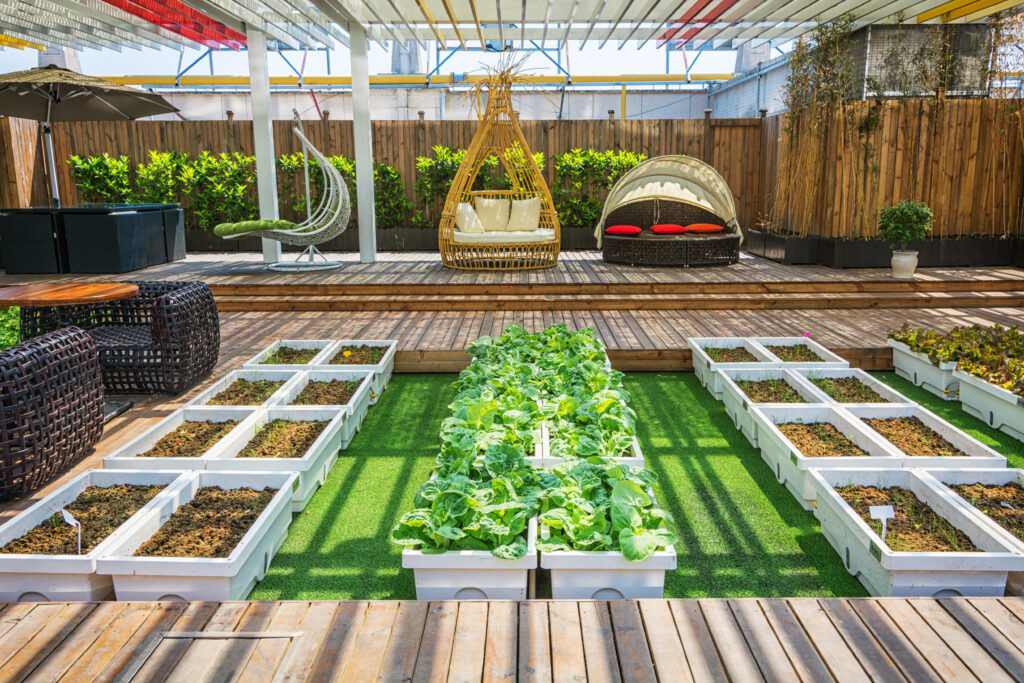Introduction
Building a deck that’s beautiful and environmentally conscious is possible with eco-friendly decking options. Choosing sustainable deck materials like reclaimed wood, composite, or bamboo can reduce your deck’s environmental impact and ensure long-lasting durability. From responsibly sourced wood to innovative green decking options, this guide covers the best choices and practices for creating an eco-friendly outdoor space. Whether you’re aiming to minimize waste, lower maintenance, or support sustainable forestry, these tips will help you build a deck that’s as green as it is stylish.
Eco-Friendly Decking: Sustainable Choices for a Green Outdoor Space

Creating an eco-friendly deck involves choosing sustainable materials and environmentally responsible building practices. Here are some top options for eco-friendly decking:
1. Choosing Eco-Friendly Decking Materials
The materials you use can make a big difference in the sustainability of your deck. Explore These Top Choices for Eco-Friendly Decking:
- Reclaimed Wood: Reclaimed wood is a sustainable choice because it uses recycled materials, giving new life to wood that would otherwise go to waste. Reclaimed wood has a rustic, natural appeal, and using it reduces the demand for freshly cut lumber.
- Bamboo: Bamboo is a fast-growing, renewable resource that can be harvested without replanting, making it an excellent eco-friendly decking material. It’s strong, durable, and naturally resistant to moisture and pests.
- Composite Decking: Made from a blend of recycled plastic and wood fibers, composite decking is a sustainable choice that requires minimal maintenance. It’s highly durable and resistant to rot, insects, and weathering, and it diverts plastic waste from landfills.
- Thermally Modified Wood: This is wood that has been heat-treated to increase durability and weather resistance. It’s an eco-friendly alternative to chemically treated lumber, as it doesn’t use harmful preservatives.
Choosing materials with a smaller environmental footprint helps reduce deforestation and supports sustainable forestry practices.
2. Sourcing Responsibly
When selecting materials, it’s important to ensure they come from responsible sources.
- Certified Lumber: When selecting decking materials, consider those certified by the Forest Stewardship Council (FSC). FSC-certified wood comes from responsibly managed forests, supporting sustainable forestry and reducing environmental impact.
- Locally Sourced Materials: Buying materials from local suppliers reduces transportation emissions and supports local economies. Additionally, local materials are more likely to be well-suited to your climate, increasing the longevity of your deck.
- Recycled Content: Seek out materials with recycled content, such as composite decking made from recycled plastics. This approach reduces landfill waste and minimizes the demand for virgin resources.
Opting for responsibly sourced materials helps support sustainable practices in the decking industry.
3. Eco-Friendly Deck Building Practices
Building a sustainable deck isn’t just about the materials you use; it’s also about the construction methods and practices that reduce waste and environmental impact.
- Minimize Waste: Plan your deck layout carefully to minimize cuts and waste. Pre-measuring and selecting standard board sizes can help reduce the amount of scrap material left over.
- Use Eco-Friendly Fasteners: Choose stainless steel or other corrosion-resistant fasteners to ensure your deck lasts longer without the need for repairs or replacements. Opt for stainless steel or coated fasteners over galvanized ones to prevent harmful chemicals from leaching into the soil.
- Optimize Material Use: Build with efficiency in mind by using all available materials, including shorter pieces. For instance, shorter boards can be used for trim or step edges, maximizing the use of each piece.
- Proper Ventilation: Good ventilation under your deck prevents moisture buildup, reducing the risk of rot and extending the deck’s life. This minimizes the need for repairs and replacement, making your deck more sustainable over time.
4. Sustainable Deck Finishes and Treatments
Choosing eco-friendly stains, paints, and sealants is essential for a truly sustainable deck.
- Low-VOC Stains and Sealants: Traditional stains and sealants can release volatile organic compounds (VOCs) that harm air quality. Look for low-VOC or water-based options, which have fewer harmful chemicals and are safer for the environment.
- Natural Oils: Finishes made from natural oils, like linseed or tung oil, are a more eco-friendly option than synthetic sealants. They penetrate the wood, providing protection while maintaining a natural look.
- Avoid Pressure-Treated Wood: Pressure-treated wood is chemically treated to resist rot and pests but can leach harmful chemicals into the soil. Opt for naturally resistant woods or use heat-treated wood instead to avoid introducing chemicals into the environment.
5. Design with Durability in Mind
A well-designed deck that stands the test of time is inherently more sustainable because it requires fewer repairs and replacements.
- Weather-Resistant Materials: Choose materials that are suited to your local climate to reduce weathering and wear. For example, composite and thermally modified wood are excellent choices for decks exposed to moisture.
- Consider Shade and Sun Exposure: Direct sunlight can fade wood, while excessive moisture can lead to rot. Consider positioning your deck in a way that balances sun and shade, or add a pergola for protection.
- Water Drainage and Ventilation: Proper drainage and ventilation reduce the likelihood of rot, mold, and insect damage, all of which can shorten a deck’s lifespan. Install drainage solutions, like sloped decking, and ensure proper airflow beneath the deck.
6. Eco-Friendly Lighting Options
Outdoor lighting elevates both the usability and atmosphere of your deck, allowing you to enjoy the space well into the evening. Choosing energy-efficient lighting reduces environmental impact and utility costs.
- Solar Lighting: Solar lights harness sunlight during the day to power lights at night. They’re easy to install, energy-efficient, and reduce electricity use.
- LED Lighting: LED lights are highly energy-efficient, consuming far less electricity than traditional incandescent bulbs and lasting up to 25 times longer. Use LEDs for deck lighting, such as step or post lights, to lower energy consumption.
- Motion Sensors: Installing motion-sensor lights conserves energy by only turning on when needed, which is ideal for security and pathway lighting.
Conclusion
Building a sustainable deck requires careful consideration of eco-friendly materials, responsible sourcing, and thoughtful construction practices. By selecting durable, environmentally conscious materials like reclaimed wood or composites and using sustainable building practices, you can create a deck that’s beautiful, long-lasting, and kind to the planet. Sustainable maintenance and low-impact finishes further enhance your deck’s eco-friendliness, making it a space you can enjoy with peace of mind. Embrace these sustainable practices to build an outdoor retreat that respects both your lifestyle and the environment.














